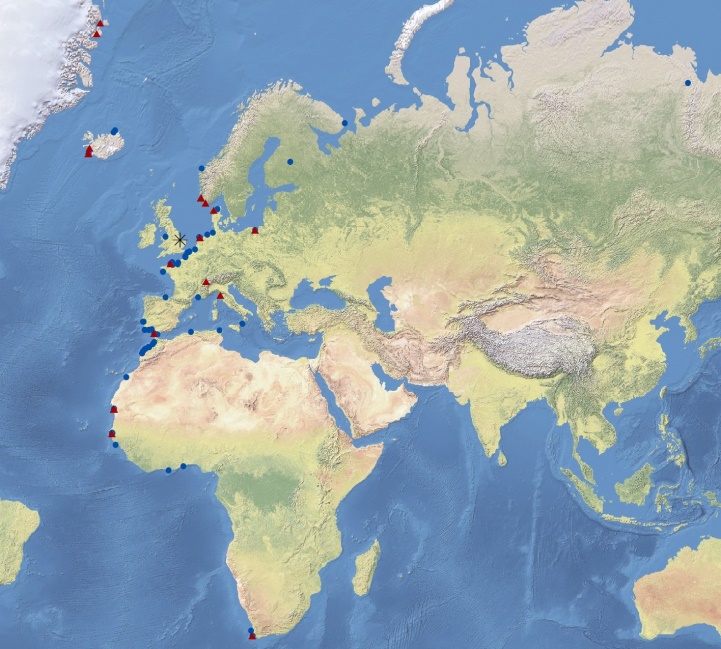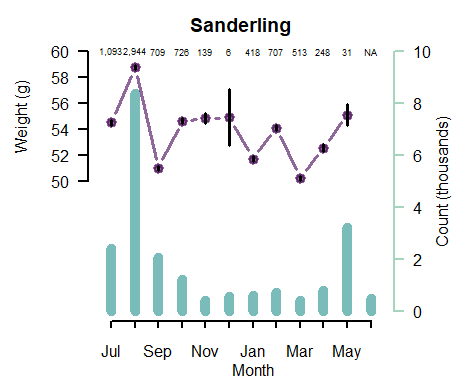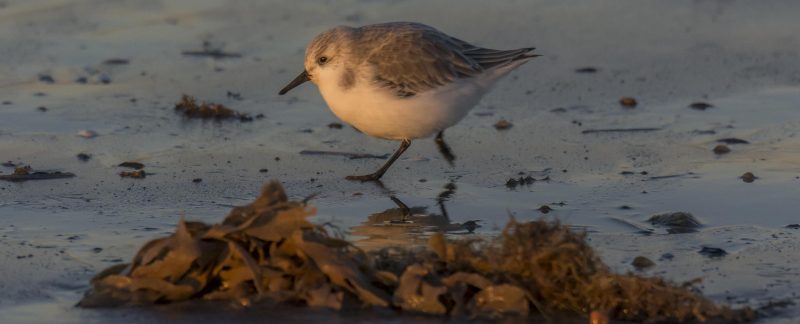Normally when people hear what time we get up to set and man our nets they look rather bemused and think of their warm beds. So it was great to welcome a crew from Autumnwatch, who joined us in during our October 2021 fieldwork to find out about our research on waders using The Wash. The crew came out with us early on a beautiful sunny Saturday morning when our target was Sanderling, one of our 11 study species, which we were able to catch.
Sanderling can be found on The Wash almost year round, but it is also an important ‘crossroads’ for them during migration. We see Sanderling on The Wash that have come from as far apart as the Lena River in eastern Siberia and northern Greenland, and down to South Africa (see map). As birds return from their high-Arctic breeding grounds in autumn, the numbers on The Wash increase from the 1,000 or so (mostly younger) birds which spend the summer with us to a peak nearing 10,000 birds in August (green bars on graph). These birds include those that moult on The Wash, most of which remain for the winter, and others that are using the invertebrate-rich mudflats of The Wash to put on weight as preparation for another long journey to their wintering areas, with some going as far south as South Africa. These birds increase the average weight of birds we catch on The Wash and are the highest we see during the year – of course, many of the birds are much heavier than the average shown (purple line on graph). We see a drop in average weights in September as the fat-loaded birds leave on their journey south, then the weights stay relatively stable until birds begin to put on weight again in the spring for their journey back to the high-Arctic, when we also have an influx of birds from other sites – attracted by the feeding opportunities The Wash offers. Comparing the weight of waders between years alerts us to any changes in the health of the population, recapturing them allows us to monitor their survival over time and the numbers of juveniles help us to understand breeding success (Meltofte et al. 2021).

For more information on the Sanderling using The Wash see our Sanderling species page: and please watch Autumnwatch on Thursday 28 October 2021 to join us as we gather the data.

*Data provided by the British Trust for Ornithology on behalf of The Wetland Bird Survey.
The Wetland Bird Survey is a partnership jointly funded by the British Trust for Ornithology, the Royal Society for the Protection of Birds and the Joint Nature Conservation Committee, in association with the Wildfowl and Wetlands Trust, with fieldwork conducted by volunteers.
Reference
Meltofte, H., Hansen, J. & Rigét, F. (2021) Trends in breeding performance in wader populations at Zackenberg, high Arctic Greenland, in relation to environmental drivers 1996–2018. Polar Biology 44, 1939–1954.

